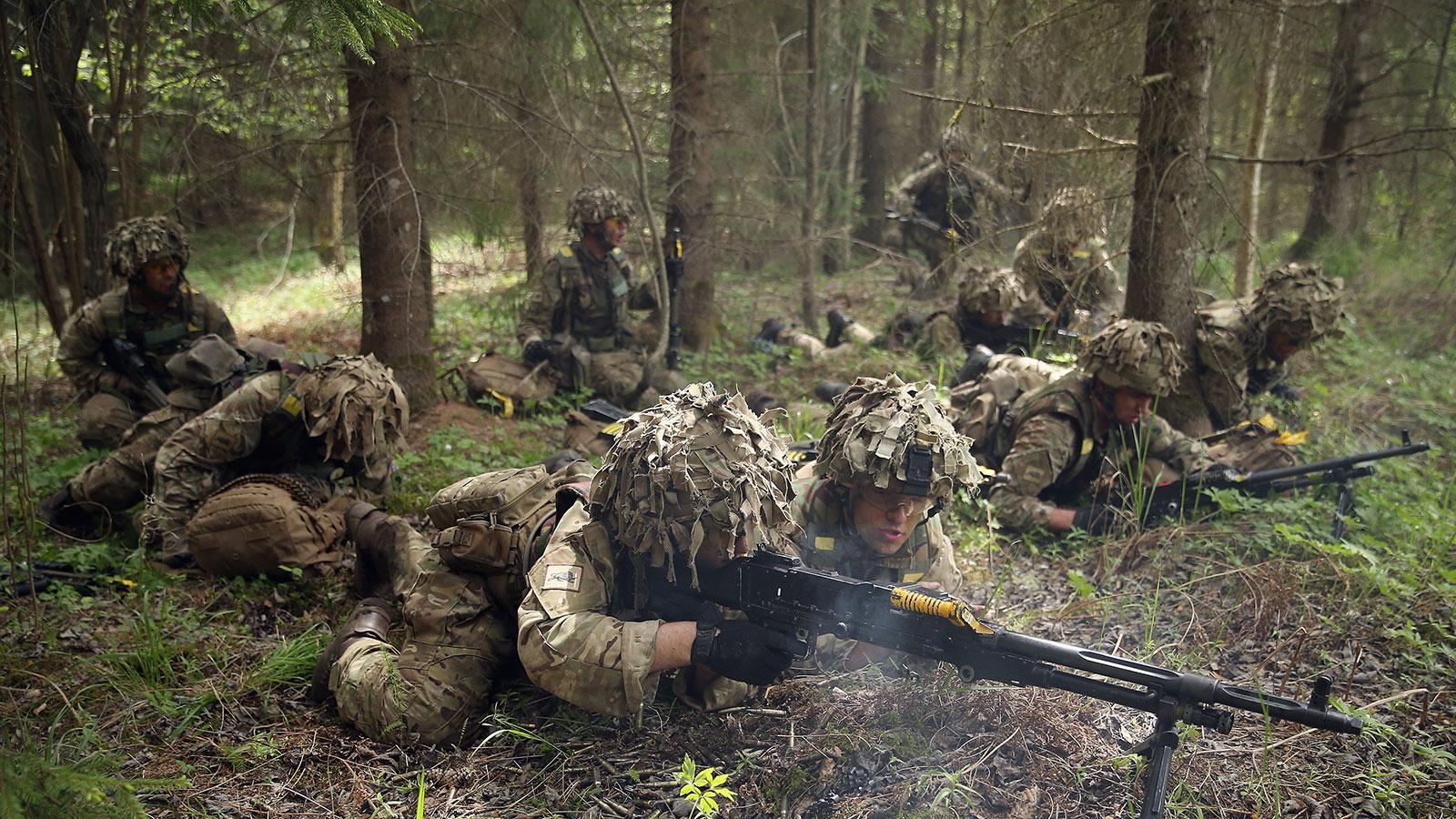This year, NATO is conducting its largest maneuver since the end of the Cold War. Now the rapid action forces, established last autumn, are displaying their fighting skills. Barbara Wesel reports from Poland.
“Birdman” is the name that maneuver planners have given the opponent in the Bothnian enemy camp. He must be retrieved from a wooden house in the middle of the military training grounds in the forest. Stationed in the nearby village of “Alpha” are his followers, armed militiamen, who have begun to destabilize the region in south-western Poland.
The scene is recognizable as it is loosely based on the situation in eastern Ukraine, except this time, a NATO member has been threatened by “little green men”. After all, the planners want to make the situation as lifelike as possible. On command, masked Czech and Dutch Special Forces fast-rope out of US helicopters, throw smoke grenades, storm the wooden house and drag “Birdman” out. Scenes like this are reminiscent of films like “Black Hawk Down” or TV series, such as “Homeland”.
Light armored vehicles belonging to Dutch-Czech support units approach, followed by waves of combat helicopters. German and Norwegian jets roar by and we’re in the middle of a war film.
The flyover was intended to intimidate and disorient the opponent, as the live battle commentator states – at any rate, the noise is impressive. Marder tanks at the edge of the forest advance with battalion 371, while on the adjacent field, a German-Norwegian unit explodes a mine field. At the same time, Norwegian pioneers set up a mobile bridge so Polish tanks can drive over an anti-tank trench. German “Panthers” on the other side meanwhile shoot armor-piercing grenades at enemy terrain.
A commander’s voice heard over army radio communications instructs “Tiger” to move in a southeast direction. “Do you copy?” he asks as a precaution. “Here Tiger, whatever you say, over,” replies a voice in English with a Polish accent. The tanks roll across the field.
Mixed forces still do not blend together smoothly
After about two hours, when the gun smoke and dust clouds have lifted, Captain Ulrich Eikenroth admits – at a small, preliminary maneuver review – that the different units and nationalities did not blend as smoothly as he had hoped.
German soldiers in particular had difficulties understanding the English commands: Perhaps they should take a language course before their German-Dutch corps becomes a NATO spearhead.
In a series of exercise maneuvers during the year, the super rapid reaction force is expected to bond and be prepared for battle. Within 48 hours, they must be ready for deployment to a potential conflict zone. The Noble Jump maneuver encompassed 2,100 soldiers, 440 vehicles and 56 tons of ammunition. In total, the rapid spearhead consists of 30,000 soldiers.
German commander Stephan Behrenz also mentions cultural differences in the armed forces working there together. For example, varying procedures must be adjusted to create a common standard. But basically, the multinational corps is supposed “to show that we can do it.”
NATO weapons for Eastern Europe
NATO Secretary General Jens Stoltenberg, who attended the exercise, seemed “impressed” by what he had seen: Soldiers from nine different nations who “stand together as one” and the needed commitment to an alliance facing growing security demands.
Representatives of the Dutch, Norwegian and the German defense ministries also traveled to Poland for the drill. Polish representative Tomasz Siemoniak even aspired to write history: The exercise grounds once belonged to the German Empire, then to the Soviet Union but now they are Polish and hosting NATO war games.
“Noble Jump” is part of a series of exercises this year, which includes naval units in the Baltic Sea, fighter jets over the Baltic countries and another large land maneuver in autumn. Russia has already reacted by conducting major maneuvers on the borders of NATO territory. Moscow had harsh words for US plans to move 5,000 troops and heavy weaponry to East European partner countries. NATO defense ministers will discuss these plans next week at their meeting in Brussels. Secretary General Stoltenberg defended the project, emphasizing, “Everything we do is defensive,” and is consistent with international responsibilities.
NATO needs to be modernized
German Defense Minister Ursula von der Leyen also supports the plan, claiming the reaction is reasonable. “It is important that it is made clear to the Baltic nations, as well as Poland, Romania and Bulgaria, that their worries are our worries,” she said and that all NATO members advocate protection, as stipulated in Article 5, the “mutual defense clause” of the North Atlantic Treaty.
In opinion polls, many German citizens reject the idea of defending neighboring countries, but Ursula von der Leyen responded by simply stating, “Article 5 is legally binding.”
Furthermore, the German defense minister praised the Zagan maneuver and her troops, but she also expressed the necessity for modernizing NATO and viewed the test phase of the rapid reaction force as part of that process.
Gone are the times of NATO’s identity crisis and stagnation, and now, political and military planners have clear goals in mind again. Of course, all high-ranking observers of the maneuver insist that NATO strategies are defensive and that crises must be solved at the negotiating table – but that does not preclude a strong bargaining position, according to Minister von der Leyen.










